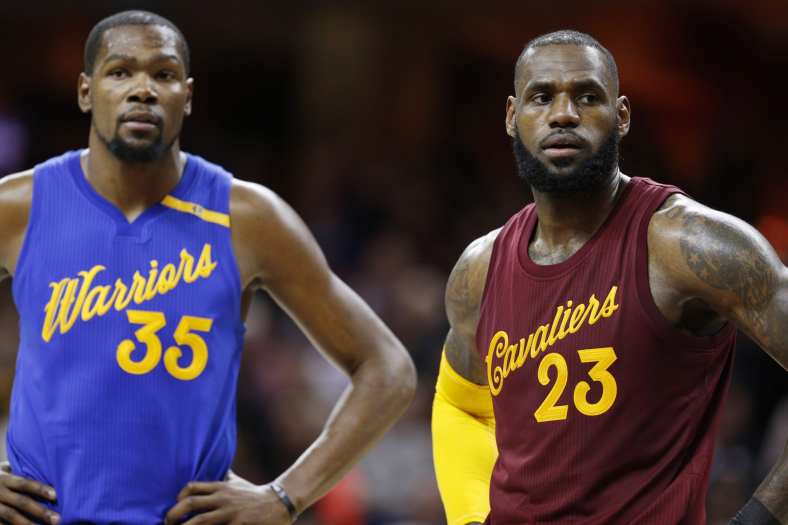
Life, and basketball, is a never-ending circle — at least over the last three seasons. As we head into the NBA Finals this June, basketball fans find themselves in a familiar place. The Golden State Warriors and Cleveland Cavaliers are playing for the title. Most expected this since Kevin Durant announced he would be going to the Warriors on July 4, 2016. And during the playoffs it’s been clear that nobody could beat — or honestly contend with — either team.
In short, the Warriors and Cavs are what we thought they were: the undisputed two best teams in basketball.
After the last two Finals, we know what’s coming. Outside of the addition of Durant, not much has changed roster-wise or strategically for either team. This is what makes this series so intriguing. This is like Ali-Frazier III — two champions slugging it out with no tricks left in the bag.
The Warriors come in as favorites and with history on the line. They’re the first team to reach the Finals without losing a game in the postseason since the 2001 Los Angeles Lakers — and the first team to do it since the first round went to a best-of-7 format. After adding Durant, the expectations are on their shoulders, but the Cavs, as we’ve learned the hard way, are the only team which can challenge them.
Cleveland was in the same position as the underdog last season even before going down 3-1 in the series, and it didn’t deter them. We know what LeBron James is capable of, we know what Kyrie Irving is capable of and we know what this team is capable of. Any doubt was shoved aside in Games 5-7 last season when they mounted the greatest comeback in NBA playoff history.
This list examines eight factors which will decide the series. A lot of what we’ll cover is what helped decide the last two Finals, such as the Warriors’ ability to hide Stephen Curry on defense. But Durant’s inclusion fundamentally changes the makeup of the series. He gives this series a chance to be the best of the three because, undoubtedly, we’re seeing the best possible versions of both teams. Don’t expect any punches to be pulled.
Here are the eight biggest keys to the NBA Finals.
Can the Warriors hide Stephen Curry on defense?
A big part of what ended Golden State last season was the Cavs battering Curry on both ends, resulting in a sorely diminished Curry on offense and a punching bag on defense. When the Warriors ran Curry through screens off-ball or he simply tried to move, the Cavs got physical, poke checking and knocking him every chance they got.
Defensively, they hunted Curry like he was Bambi’s mom. Every time down the court, they’d use his man as the screener until the Warriors were forced to switch him onto either LeBron James or Kyrie Irving. From there, it was easy money.
Curry is the lone weak link for the Warriors on defense — at least on their crunch-time lineup, affectionately dubbed the “Hamptons 5” by the Mercury News’ Tim Kawakami. This defense consists of Curry, Klay Thompson, Kevin Durant, Andre Iguodala and Draymond Green (other lineups featuring guys like Zaza Pachulia and Ian Clark don’t require them to go after one guy). Wearing Curry down defensively — and with physicality on offense — also badly diminishes what he can do when the Warriors have the ball.
A year later, it’s still impossible to know whether Curry’s injury lingered into the 2016 Finals. But it’s abundantly clear that he was drained by the end of the series. This had a lot to do with how the Cavs treated him defensively. Over the last three games of the Finals last season, Curry shot just 30.8 percent on drives, per NBA.com’s tracking, after shooting 54.5 percent over the first four.
Hunting him won’t bear the same fruits it did last year because the Warriors can simply go to Kevin Durant for offense, but for the Cavs, it may be the easiest way to score in crunch time.